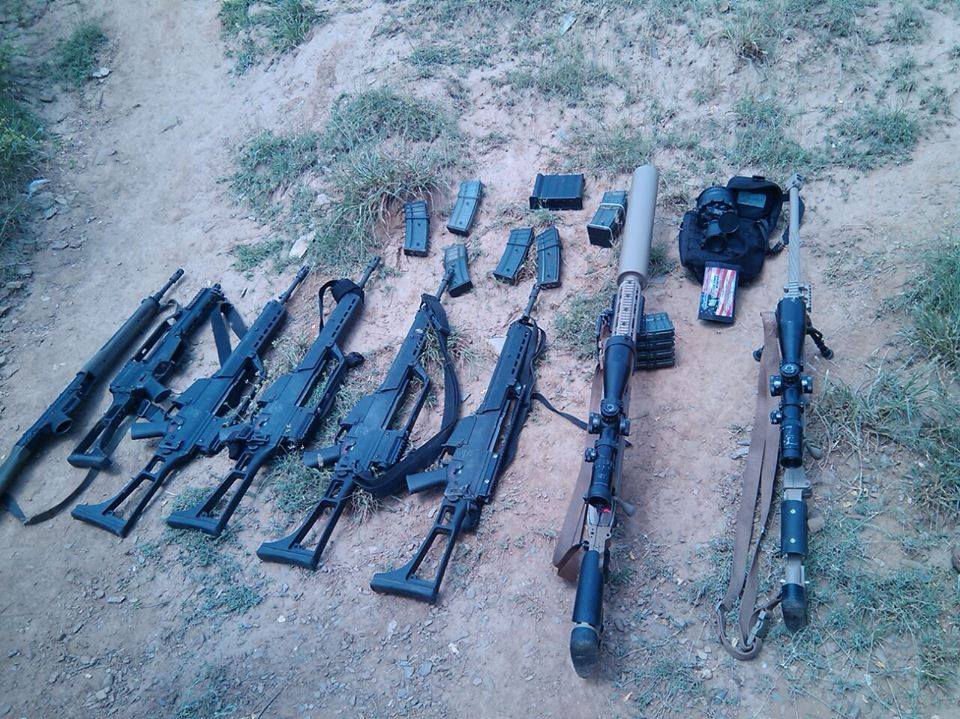Yamanyoon- 14 Dec 2017
In fact, the United States is the world’s top arms trader in the multi-billion-dollar industry, which helps fuel conflict and instability in the Middle East and North Africa. According to a new analysis of industry data by the Stockholm International Peace Research Institute (SIPRI), the growth in arms sales was expected and is driven by the implementation of new national major weapon programs, ongoing military operations in several countries, and persistent regional tensions that are leading to an increased demand for weapons.
Considering more than half of SIPRI’s top 20 weapons sellers are based in the United States – including Lockheed Martin, Boeing, Raytheon, and Northrop Grumman in the top five – it is clear the US has had a decisive influence on the ongoing regional instability and chaos. On this, the “War on Terror” has become a plot device for politics and profits, not a rational policy, for the warmongers on the Capitol Hill. They are not at all interested in peace because it’s not good for their global weapons business.
But terrorism, failed states, regional conflicts and civil wars are always good for business. They all threaten the national security of the United States and its allies. These threats are fueled in part by an unregulated US market for conventional weapons. The goal is to sell as many weapons as possible and widen the unregulated spread of weapons that help fuel regional instability.
On this goal, the Middle East is plunging deeper into an arms race, a development that experts warn is fuelling serious tensions and conflict in the region. Given the unprecedented levels of weapon sales by the United States (as well as Canada and the UK) to the mainly Persian Gulf Arab states, the new US troops surge in Syria, the greater bombing runs in Yemen by the Saudis and allies, and the ongoing nuclear standoff in the Korean Peninsula, seems likely to accelerate the proliferation and stoke global tensions further still.
That will see agreed arms sales to the top purchasers in the region – Saudi Arabia and the United Arab Emirates – surge this year to more than $100bn. Among the systems being purchased are jet fighters, missiles, armored vehicles, drones and helicopters. Worse still, these states are now more prepared to use the American weapons they are buying.
Ironically, the same defense industry officials on the Capitol Hill who are calling on Saudi Arabia to lift the illegal blockade on Yemen, are also endorsing additional requests from their Arab allies fighting Yemen – mainly Saudi Arabia and the UAE – for thousands of new US-made weapons, including missiles and bombs, to rebuild depleted arms stockpiles. This shows how Saudi Arabia has become the world’s largest importer of weapons and fourth largest military spender and that other Arab states are sharply increasing their arms purchases.
Adding to the concern is the fact that the spending spree on arms comes against the background of a marked increase in military interventions by the US and its Arab allies in the region. In addition, a new Saudi-led military alliance – announced this year and dubbed the “Arab Nato” – appears primarily designed as a new foil to Iran in the widening tension between Riyadh and Tehran.
And among those concerned by the Saudis’ new military assertiveness – on the back of its arms buying spree – is Iraqi Prime Minister Heidar Abadi, who says, “The dangerous thing is, we don’t know what the Saudis want to do after [their war on Yemen]. Is Iraq within their radar? That’s very, very dangerous. The idea that you intervene in another state unprovoked just for regional ambition is wrong.”
All this is just the thin edge of the wedge. The Saudi-led war on Yemen is the latest manifestation of Arab interventionism, a trend that has been gaining momentum in the Middle East since the Saudi intervention in Bahrain during the Arab uprisings. These autocratic regimes appear to be increasingly willing to use their armed forces to attack any neighbor that doesn’t like them and pursue their illicit interests in crisis zones across the region.
On top of that, when it comes to how the West perceives its destabilizing arms sales to the Middle Eastern dictatorships – whether they are British or US or whatever – it tends to be seen as a domestic economic issue – “protecting our factories” or “making America great again” – instead of averting humanitarian disaster or institutionalizing a non-violent conflict-resolution mechanism following a war. That neglects the regional political dimensions too, with arms sales taking place with a lack of regard for that context and without long-term strategic .





